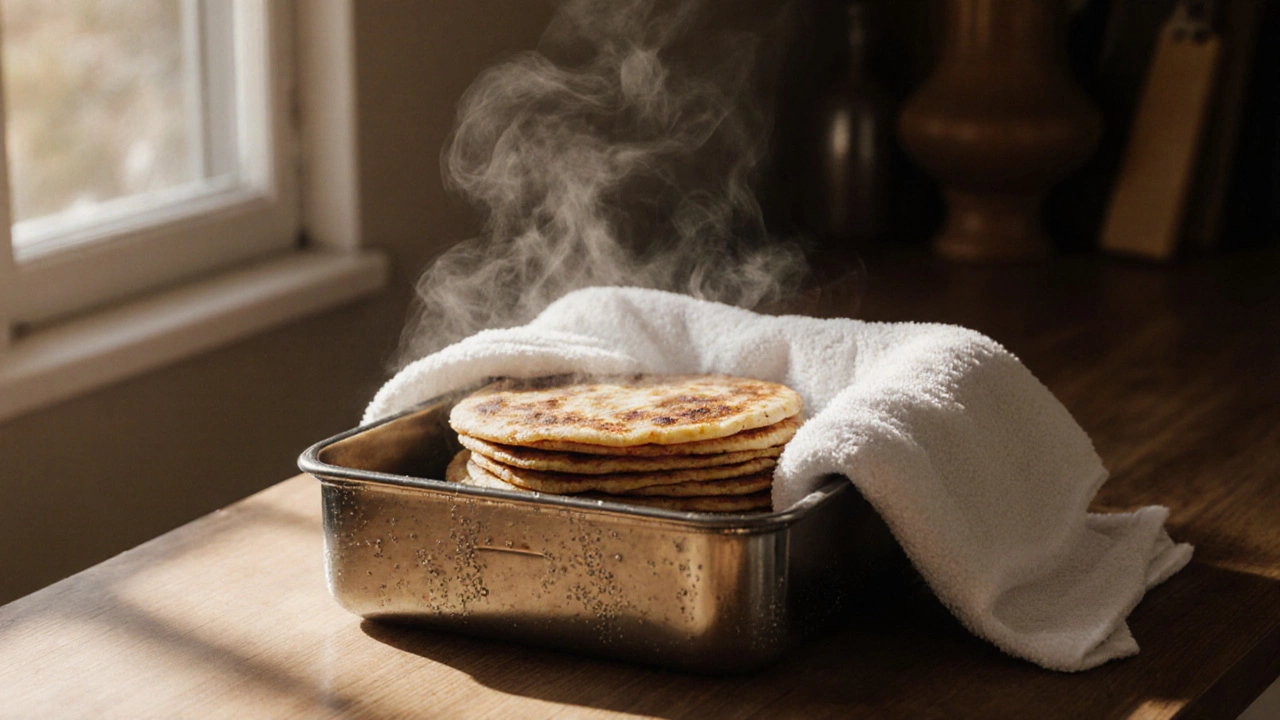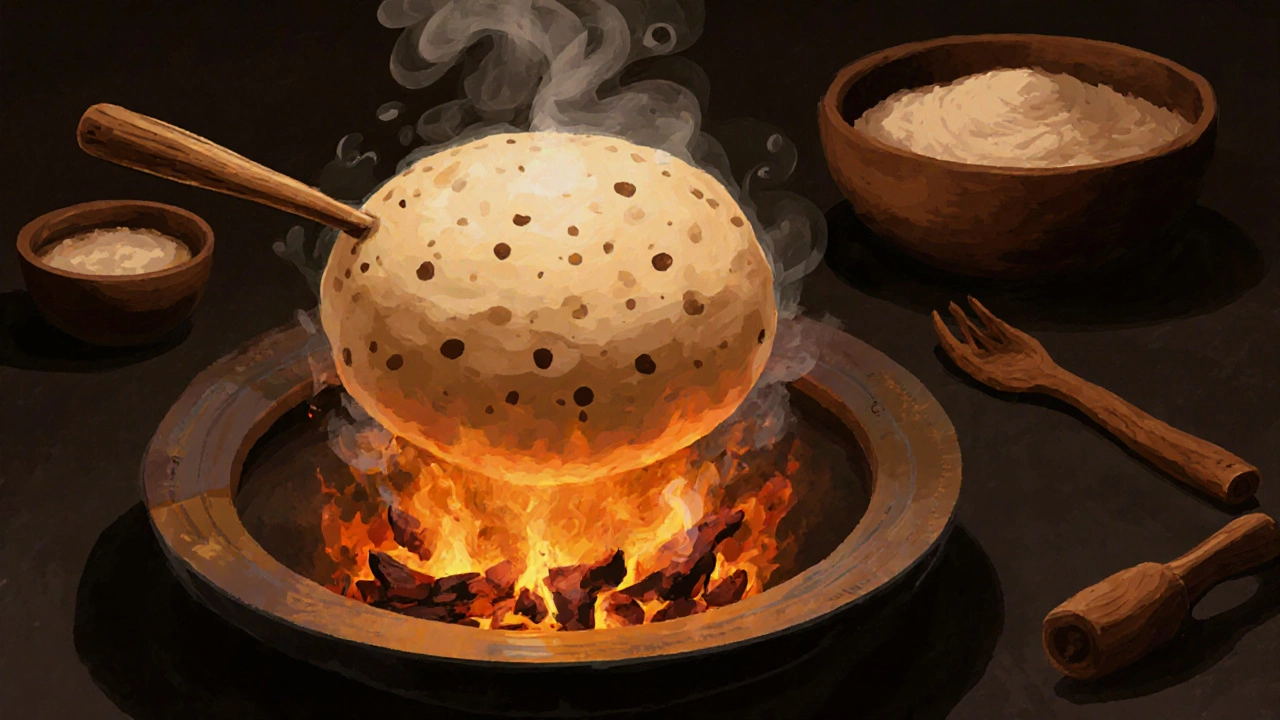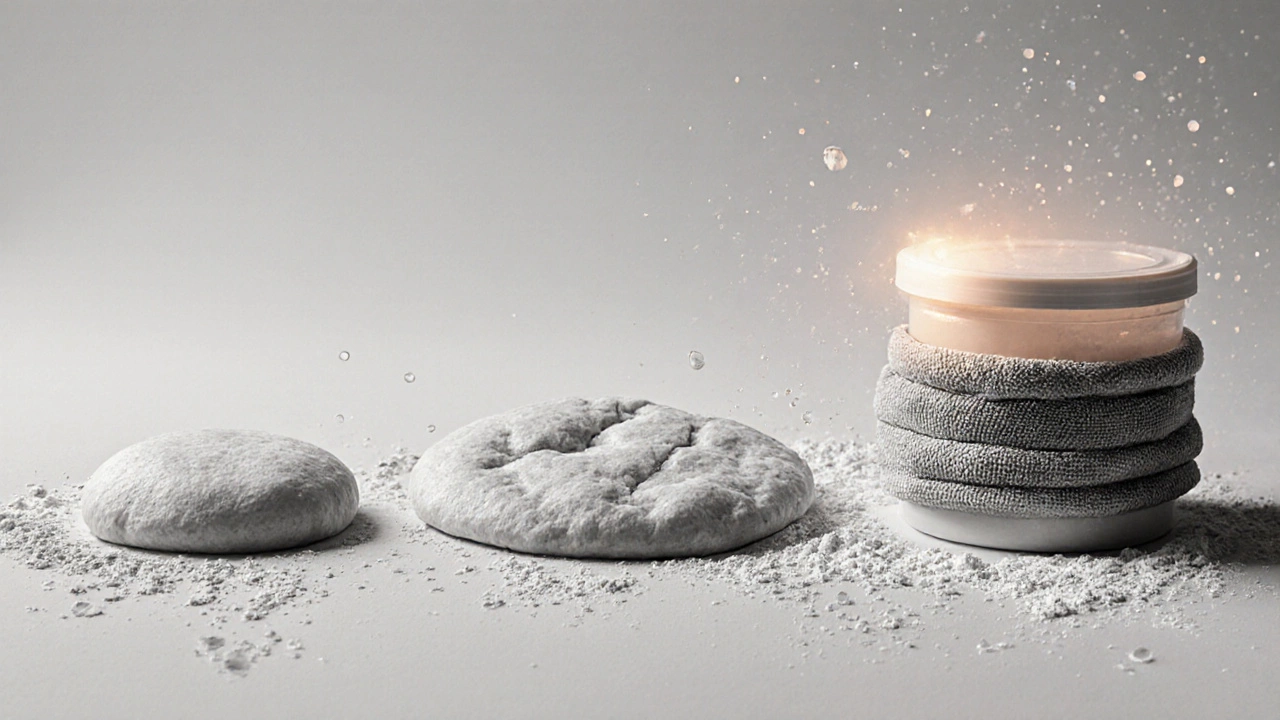
Roti Freshness Calculator
Calculate how long your roti will stay soft based on your storage method and when you plan to eat it.
Ever made a batch of fresh roti only to find them hard and dry by lunchtime? You’re not alone. Roti is meant to be soft, pliable, and warm - not like cardboard. The problem isn’t your dough or your tawa. It’s what happens after you take them off the heat. Most people don’t realize that roti goes stale not because of the flour, but because of moisture loss and air exposure. The good news? You can keep roti soft for days with just a few simple, no-fail steps.
Why Roti Gets Hard
Roti is made from whole wheat flour, water, and salt. That’s it. No oil, no sugar, no preservatives. That’s what makes it healthy - and why it dries out fast. When roti cools, the starch molecules inside start to recrystallize. This is called retrogradation. It’s the same reason bread goes stale. But unlike packaged bread, roti has no additives to slow this down. So if you leave it on the counter, uncovered, it loses moisture to the air in minutes. Even a few hours in a plastic bag without proper technique can turn soft roti into a cracker.Step 1: Roll Them Right
Soft roti starts with the dough. Use cold water, not hot. Cold water helps the gluten form slowly, giving you a more tender texture. Mix 2 cups of whole wheat atta with a pinch of salt. Add water gradually - you want the dough to feel like your earlobe. Not too sticky, not too firm. Knead for at least 8 minutes. Yes, eight. That’s when the gluten network becomes strong enough to trap steam while cooking. Skip this step, and your roti will puff unevenly and dry out faster. After kneading, cover the dough with a damp cloth and let it rest for 30 minutes. This lets the flour fully hydrate. If you roll roti too soon, the dough will spring back, and you’ll end up with thick, uneven circles that don’t cook properly. Always roll them thin - about 6 inches across. Thicker roti holds moisture inside, but it also cooks unevenly and gets dense. Thin roti puffs up, traps steam, and stays soft longer.Step 2: Cook Them Perfectly
Your tawa should be medium-hot - not smoking, not barely warm. Test it by sprinkling a few drops of water. They should sizzle and evaporate in 2 seconds. Place the rolled roti on the tawa. Let it sit for 15-20 seconds until small bubbles appear. Flip it. Cook the other side for another 20 seconds. Now, lift it with tongs and hold it directly over the flame for 5-10 seconds. This is the secret. The direct flame causes the moisture inside to turn to steam instantly, puffing the roti like a balloon. That trapped steam is what keeps it soft for hours. Don’t skip this step. Roti cooked only on the tawa will be flat, dense, and dry by afternoon.
Step 3: Stack and Wrap Immediately
As soon as each roti comes off the flame, put it in a stack. Don’t let them sit on the counter. Stack them one on top of the other while they’re still hot. The heat from the bottom roti keeps the top ones warm and moist. Once you have 5-6 roti stacked, wrap them in a clean, dry kitchen towel. Then, place the towel-wrapped stack inside an airtight container or a sealed plastic box. The towel absorbs excess moisture without letting the roti get soggy. The container stops air from drying them out. This combo traps steam like a mini greenhouse. If you don’t have an airtight container, use a ziplock bag. Squeeze out the air before sealing. But don’t use plastic alone - always wrap in a towel first. Plastic directly on hot roti makes them wet and sticky. The towel is the unsung hero here.Step 4: Reheat Without Drying Them Out
You don’t need to eat roti fresh off the tawa every time. Reheating works perfectly if you do it right. Take a roti out of the container. Dampen a paper towel with water - just a light mist, not soaked. Wrap the roti in it. Microwave for 15-20 seconds. The steam from the paper towel rehydrates the roti without making it soggy. If you don’t have a microwave, heat a tawa on low. Place the roti on it for 10 seconds per side. Then, wrap it in a clean cloth for 2 minutes. The trapped steam brings back the softness. Never reheat roti in the oven or toaster. Dry heat pulls out every last bit of moisture. You’ll end up with a crisp, flavorless disc.How Long Can Roti Stay Soft?
With these steps, you can keep roti soft for up to 48 hours at room temperature. If you refrigerate them, they’ll last 5 days - but you must reheat them properly before eating. Freezing works too. Wrap each roti individually in parchment paper, then place them in a freezer bag. They’ll stay soft for 3 months. Thaw at room temperature, then reheat with the damp towel trick.